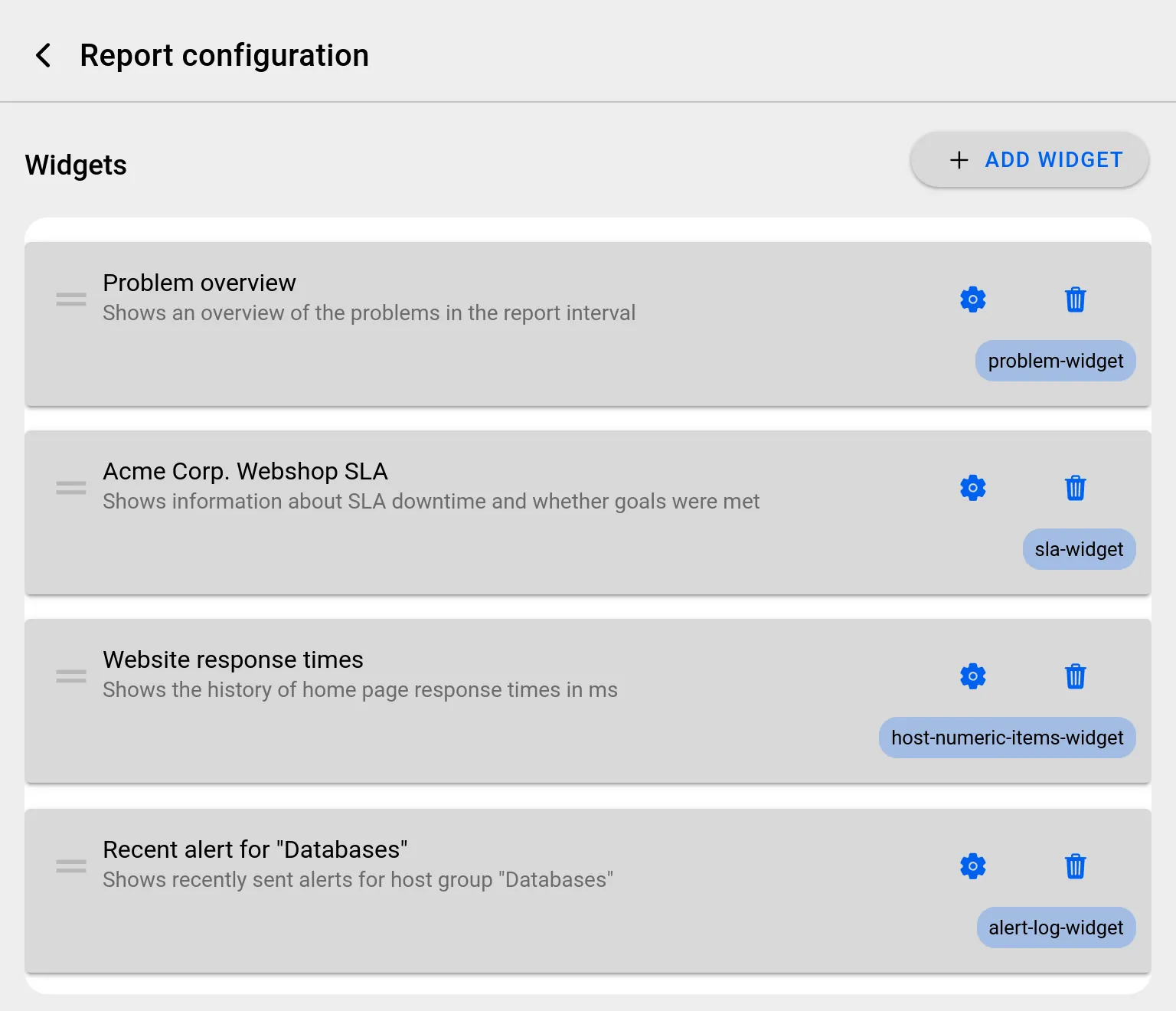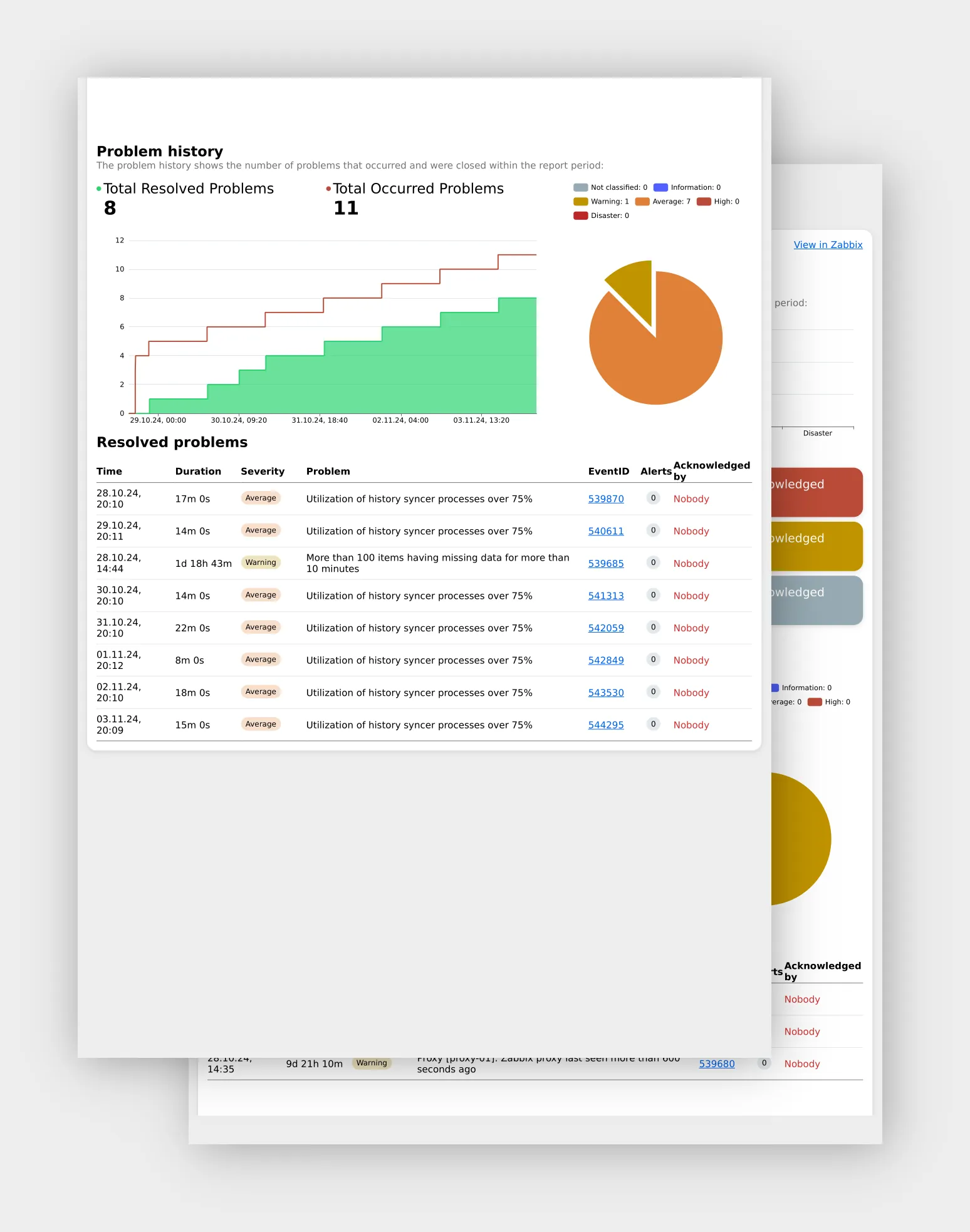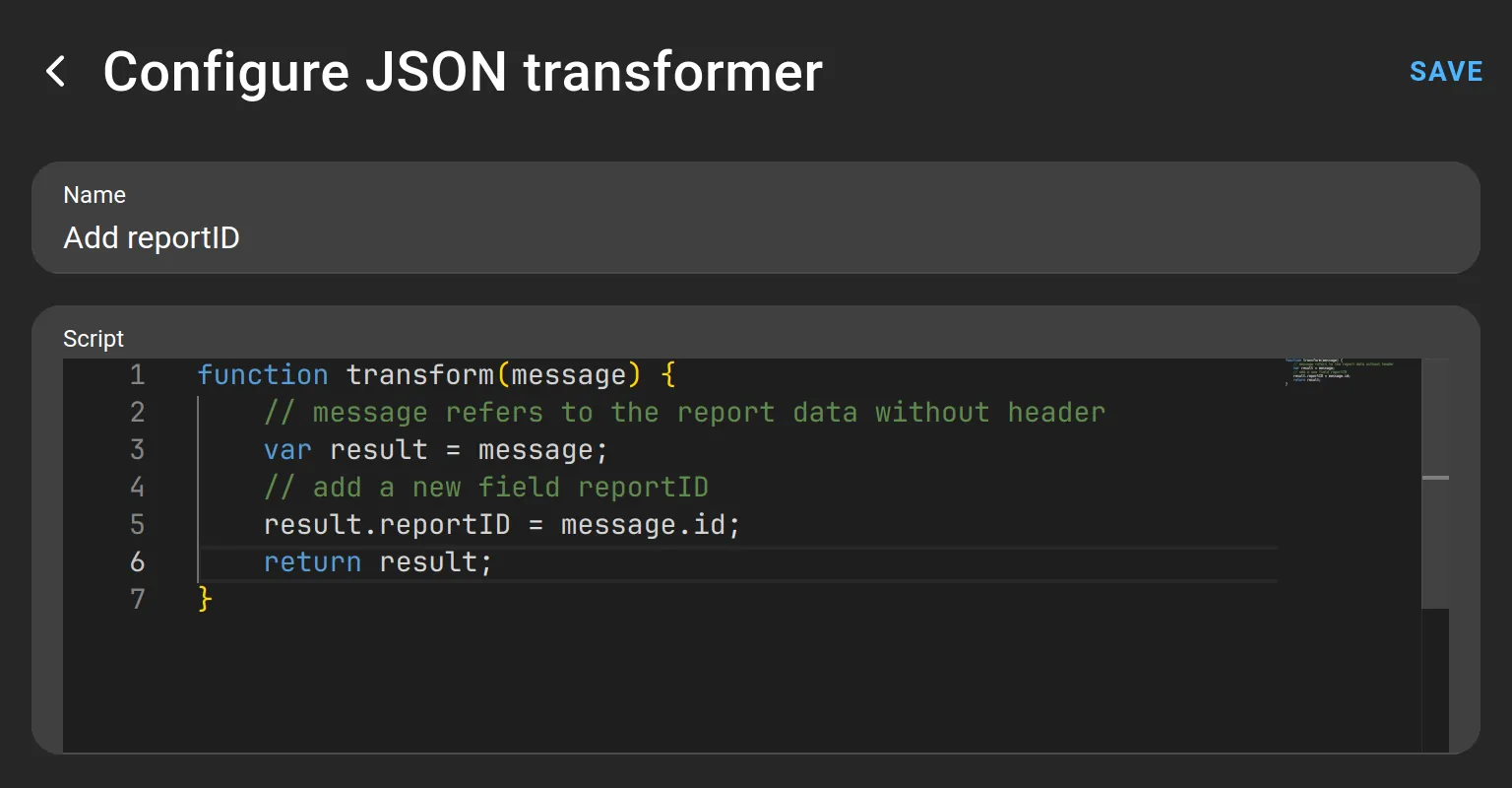
Configuration of automated scheduled reports
Reporting
With DataForge you can schedule custom reports to be generated automatically with data from your Zabbix server.
You can, for example, receive periodic PDF reports via email, or create reports in machine-readable formats to allow further processing with external software.
- Easily configure reports in your web browser
- Access a clear overview of your report jobs and any potential problems
- Insightful report widgets
- Optional table of contents with jump marks
- Supports various output formats (PDF, JSON, XML, CSV, ProtoBuf)
- Versatile report delivery / export options (email, S3, SCP, Kafka)
DataForge features
DataForge documentation
Open documentationInnovativ & customizable
Versatile widgets
We offer you a many helpful widgets that you can use to easily configure reports that fit your needs – without an in-depth technical understanding.
- Alert log widget
- Busy triggers widget
- Host inventory widget
- Host numeric items widget
- Host text items widget
- Long problem widget
- Markdown widget
- Problem widget
- Recovery widget
- SLA widget


Delivery to various different media types
Flexible delivery options
You can configure DataForge reports to be delivered to multiple destinations. Users can easily subscribe to email reports with their email address, yet you can also send reports to other servers with various protocols for easier further processing & automation.
- Email (configure your own email server)
- S3 upload (object storage)
- SCP upload (SSH)
- Kafka message queue
Matches multiple different use cases
Different render types
DataForge reports can be delivered in different formats.
This means that human-readable PDF reports can be created, as well as machine-readable reports in JSON, for example, for external processing.
These render types are currently supported:
- JSON
- XML
- CSV (Excel)
- Protocol Buffers


Passen Sie Berichte vor dem Versand an
JSON tansformers
Mit unseren JSON-Transformern können Sie Berichtsdaten vor der Weiterverarbeitung und dem Versand mit einem individuellen JavaScript-Skript bearbeiten und eigene Berechnungen & Anpassungen an den Daten durchführen.
Der JavaScript-Code wird in einer isolierten Umgebung ausgeführt, kann also die Berichtsdaten modifizieren, aber z.B. keine HTTP-Anfragen an einen anderen Server schicken.